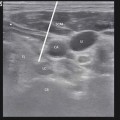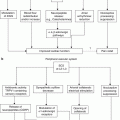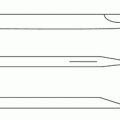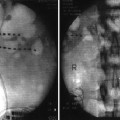Fig. 37.1
The torpedo fish. An early treatment option
For any type of gout, a live black torpedo should, when the pain begins, be placed under the feet. The patient must stand on a moist shore, washed by the sea, and he should stay like this until the whole foot and leg up to the knee is numb. This takes away present pain, and prevents pain from coming on if it has not already arisen [1].
In the seventeenth century, Gilbert, a famous scientist of the time, described the use of lodestone, a piece of magnetic iron ore, to treat pain. He wrote that the electromagnetic qualities of the lodestone could be used to manage pain symptoms of headaches, mental disorders, and marital infidelities with varying degrees of success [2].
Dutch physicist Pieter van Musschenbroek, University of Leyden, is credited with a breakthrough in the storage of electrical charges. This device he developed, the Leyden jar (Fig. 37.2), stored an electrical charge that was constructed by placing water in a metal container suspended by insulating silk cords and placing a brass wire through a cork into the water. In 1746, Jean Jallabert employed a Leyden jar and discovered that electricity could be used to stimulate muscle fibers [3]. Jallabert treated a paralyzed limb in a locksmith causing involuntary contractions, regeneration of muscle, and increased blood flow. Jallabert’s report inspired many scientists, and over the following two decades, there were several reports of successful treatment of neuromuscular disorders and disease. In1756, Leopaldo Caldani noted that a Leyden jar could be discharged in the vicinity of a mounted and dissected frog’s leg, which subsequently caused the leg to twitch. This discovery led many to proclaim electricity as a miracle cure for many diseases and that its use in stimulating areas of the body had far-reaching applications [4]. Benjamin Franklin, the first American credited with using neurostimulation, was intrigued by these experiments and conducted his own research on the treatment of painful conditions. After many failed experiments, Franklin concluded that successful claims of pain treatment were without merit and reported that his tests produced nothing more than discomfort for his subjects. It should be noted, however, that Franklin used high-voltage stimulation in his experiments, which caused true adverse effects of burning and injury to his test subjects.
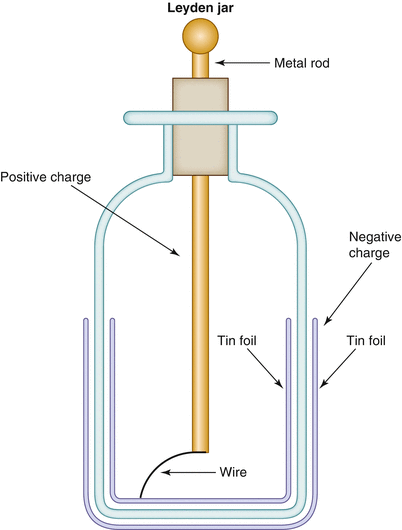

Fig. 37.2
The Leyden jar
In 1840, Guillaume Duchenne used a process of “electro puncture” to map muscle function, using electrically charge needles that were inserted into the skin. Duchenne’s book “De L’electrisation Localise” described direct muscle stimulation and indirect nerve stimulation and contributed to greater understanding of the effects of electrical current on these systems.
Stay updated, free articles. Join our Telegram channel

Full access? Get Clinical Tree



